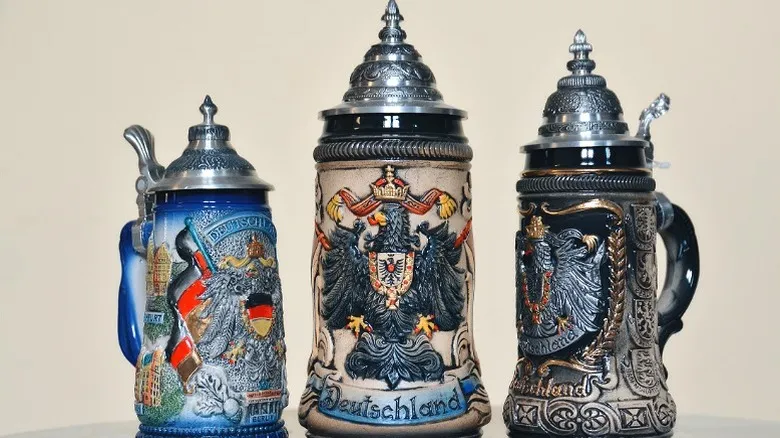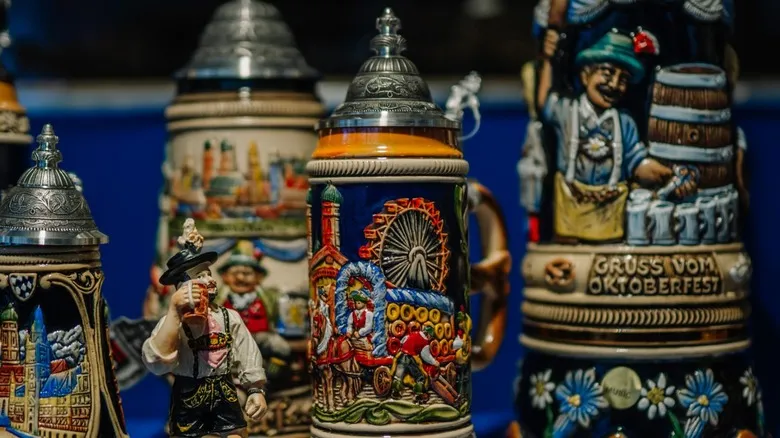The steinzeugkrug was ahead of its time

The bubonic plague began to subside with the introduction of "quarantine," a term derived from the practice of keeping sailors confined to their infected ships for 40 days. Following this, new sanitation laws emerged, helping to prevent future outbreaks, resulting in varying levels of success in different regions. The decision to cover food and beverages was remarkably progressive, especially when other pandemic responses included practices like flagellation and bloodletting. Steins serve as a testament to the advancements we've made in food safety and preservation.
In the centuries that followed, steins evolved to emphasize style over practicality, becoming a means to showcase wealth and artisanal skill. Designs began to incorporate motifs from German history and culture, solidifying the stein's status as a cultural icon. Steins play a significant role in Oktoberfest festivities, and for those with a bit of arm strength, there are even stein-holding competitions to participate in. While many people today opt for Stanley tumblers, you could stand out by carrying a handmade steinzeugkrug. Just a thought!
Recommended

This Is Your Go-To Summer Cocktail Based On Your Zodiac Sign

Why You Should Think Twice Before Using Cooking Wine

The Ingredients To Look For In A Quality Canned Margarita

What To Consider When Shopping For Sweet White Wine
Next up

